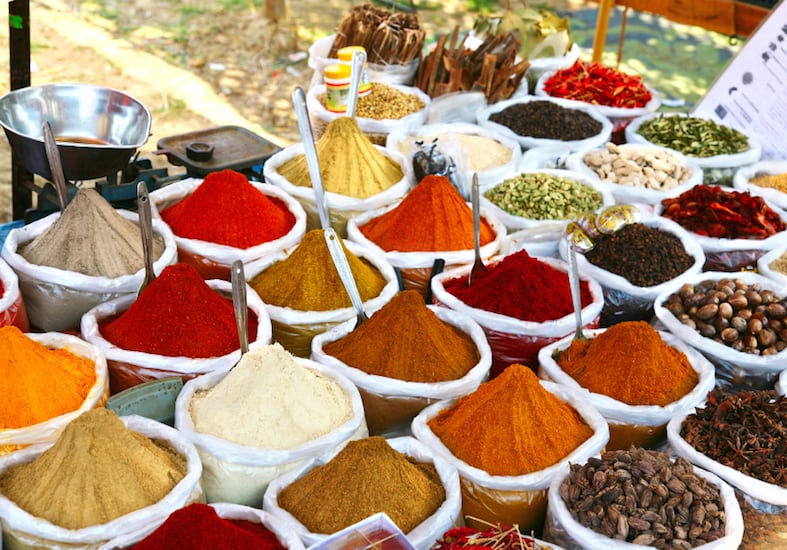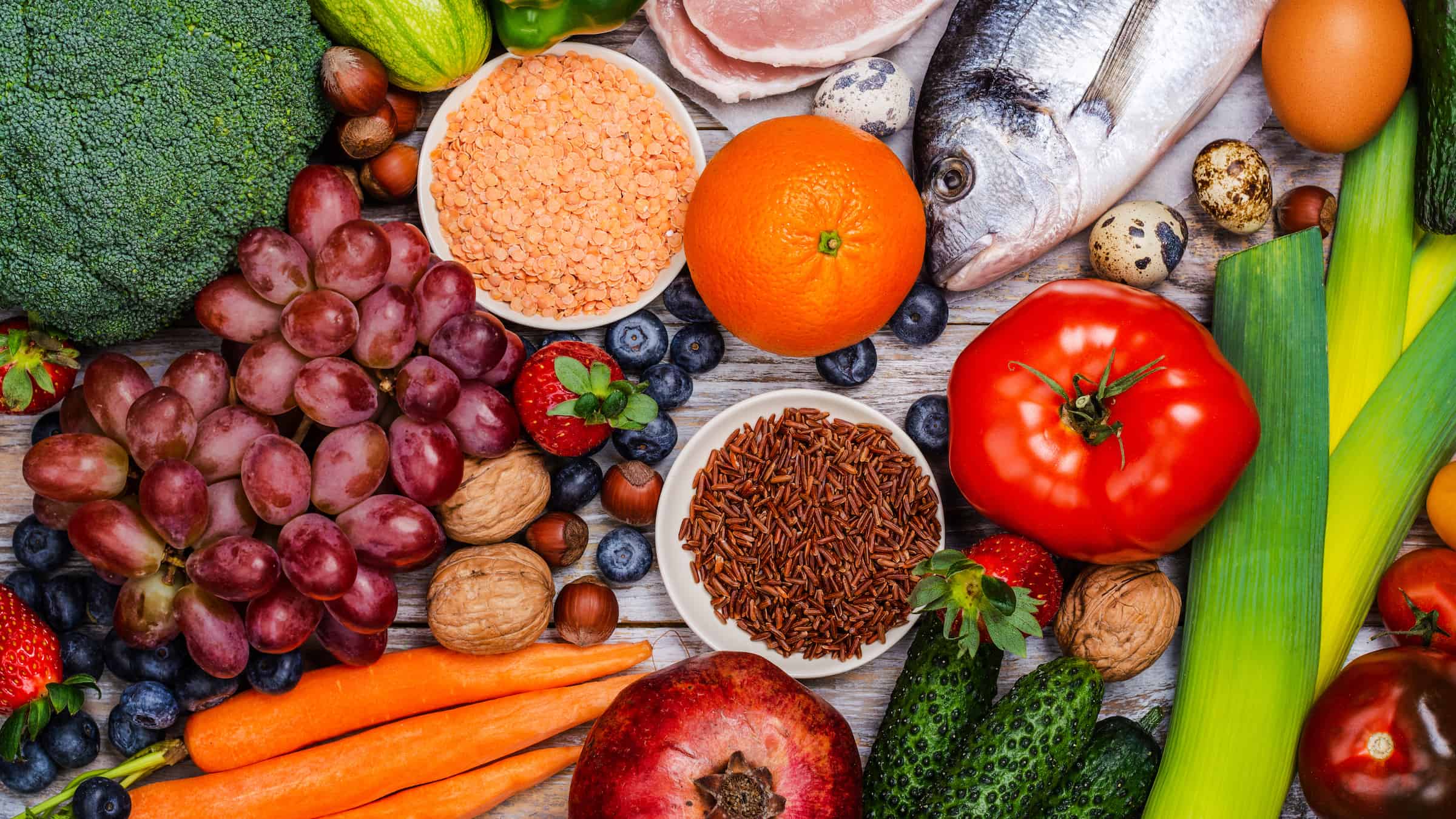Spices can turn a boring chicken breast into a fine dining experience, bring out the hidden flavors of red meat, and even turn vegetables into a flavorful event. Best of all? They’re an excellent way to add flavor to food without additional calories.
But for newbies, finding your way around a spice drawer can feel like a trying task. Below, we’ve picked the basic spices you need to know, what types of foods to use them with, and what kind of dishes to create with them. Time to get cookin’!
Basil
Basil is a popular herb native to Italy and featured in many Italian dishes including pesto, tomato sauce, pizza, and pasta. The fragrant herb is normally used fresh in cooked recipes, as cooking it can diminish the flavor.
Color:
Bright green; buy varieties without any brown or yellow spots
Scent:
Very aromatic; hints of spice, pepper, and mint
Taste:
Sweet and peppery; somewhere between the notes of licorice and cloves
Traditional cuisines:
Mediterranean, Thai, Italian
Traditional dishes:
Pesto, Tomato Basil Salad, Tomato sauces
Recipes:
Pesto, Caprese Salad, Tomato Sauce
Storage tips:
Store in a damp paper towel in the fridge and use within 4 days of purchase.
Real results with a personalized weight loss program
Take the quiz!

Oregano
Oregano is native to the Mediterranean region and belongs to the mint family. It’s recognized for its nutritional, antioxidant, and disease preventing properties.
Color:
Olive green
Scent:
Spicy and sweet
Taste:
Hearty, peppery, with a slight hint of sweetness
Traditional cuisines:
Mediterranean, Greek, Latin America
Traditional dishes:
Chicken, fish, and veggies
Recipes:
Oregano and Lime Roasted Chicken Breasts, Fish Fillets with Olives and Oregano, Parmesan, Zucchini, and Corn
Storage tips:
Oregano should be rich green in color and not at all limp when purchased fresh; store in a plastic bag in the refrigerator for up to 3 days
Thyme
Thyme is a delicate looking herb with a penetrating, minty fragrance hailing from Southern Europe and the Mediterranean. It’s available year-round and matches well with beef, chicken, lamb, fish, lentils, and carrots.
Color:
Green
Scent:
Earthy and savory with a hint of citrus
Taste:
Earthy, hints of clove
Traditional cuisines:
Mediterranean, Italian, and French
Traditional dishes:
Soups, stews, stocks, and sauces
Recipes:
Butternut Squash-Parsnip Soup with Thyme, Spring-Thyme Chicken Stew Recipe, Homemade Chicken Stock with Fresh Oregano, Thyme, and Rosemary, Salmon Fillets with Lemon-Thyme Sauce
Storage tips:
To store fresh thyme, wrap it in a damp paper towel and place in a plastic bag in the refrigerator.
Cumin
Cumin ‘seeds’ are actually the small dried fruit of an annual plant in the parsley family. The spice has a distinctive flavor and strong scent due to its abundant oil content. Cumin is native to the Mediterranean and is similar to caraway seeds, but has a hotter taste.
Color:
Ranging from brown in seed form to bright orange/yellow when powder
Scent:
Warm, aromatic
Taste:
Earthy, sweet, bitter, smoky
Traditional cuisines:
Middle Eastern, Asian, Mediterranean, Mexican
Traditional dishes:
Falafel, curry, rice and beans, Chile con carne, various spreads
Recipes:
Panfried Falafel with Cumin and Garlic, Aloo Gobi, Salsa
Storage tips:
Ground cumin should be stored in an airtight package in the freezer
Paprika
Paprika, a spice native to South America, is a fine powder ground from certain varieties of Capsicum annuum (a fancy word for peppers). They may be small and round or pointed and cone shaped and they’re larger and milder than chili peppers.
Color:
Deep red to rusty brown
Scent:
Slightly warm and sweet
Taste:
Ranges from sweet and mild to pungent and fiery, depending on the region it was grown
Traditional cuisines:
Hungarian, Serbian, Spanish
Recipes:
Paprika Chicken and Spinach with White Wine Butter Thyme Sauce, Baked Zucchini Chips with Paprika and Sea Salt, Paprika Potatoes
Storage tips:
Store paprika in a cool, dark cupboard, away from direct heat and sunlight. Keep tightly closed when not in use.





